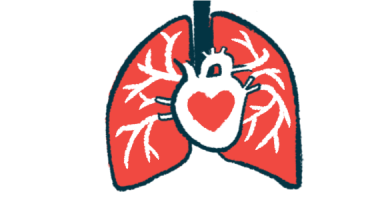Low Sodium, Need for Vasopressors Among PAH Mortality Risk Factors

Despite recent advances in care, mortality while in the intensive care unit (ICU) and up to one year thereafter remains high among people with pulmonary arterial hypertension (PAH), a new study reports.
Risk factors for mortality one year after ICU discharge included low blood sodium, raised pro-B-type natriuretic peptide (proBNP; a heart disease marker), total bilirubin — a liver function marker — treatment with vasopressors/inotropes, mechanical ventilation, and kidney replacement therapy. Inotropes typically increase the ability of the heart muscle to contract and vasopressors narrow blood vessels, which increases blood pressure.
The study, “Causes and outcomes of ICU hospitalisations in patients with pulmonary arterial hypertension,” was published in ERJ Open Research.
PAH still is associated with high hospital admissions and mortality rates regardless of improvements in medical care and treatments. Although right heart failure has been identified as the leading cause of hospitalizations and mortality in PAH, the other risk factors involved are poorly characterized.
Scientists analyzed data of adults with PAH to determine the causes, characteristics, outcomes, and mortality risk factors in patients admitted to ICU. Participants’ medical history, PAH characteristics, ICU admission, treatment, and discharge information were obtained from patient records.
A total of 102 patients admitted to the Johns Hopkins Hospital Medical ICU between January 2010 and December 2020 were included in the study. Their mean age at first admission was 58.7, 84.3% were female, and 59% were white.
Of the group, 29 had idiopathic (no cause identified) PAH, 57 had connective tissue disease (CTD)-PAH and 16 had other PAH consisting of congenital heart disease (CHD)-PAH, portopulmonary hypertension-PAH, and HIV-associated PAH. Portopulmonary hypertension is marked by elevated pressure in the portal vein that directs blood from the gastrointestinal tract to the liver.
Compared to those with idiopathic PAH (IPAH), the group with CTD-PAH were significantly older, (63.5 vs. 53.7), had a lower proportion of women (89.5% vs. 93.1%), a higher proportion of whites (63.1% vs. 55.2%), a lower proportion of African Americans (35.1% vs. 41.4%), and had more co-existing conditions.
Severe PAH was detected in all the groups at the time of diagnosis. Those with CTD-PAH had significantly lower pulmonary arterial pressure compared with IPAH and other-PAH patients, as well as lower pulmonary vascular resistance, a measure of the internal resistance to blood flow within the lung arteries. The median period from PAH diagnosis to first ICU admission was 38.9 months, and was significantly shorter with CTD-PAH than IPAH (39.5 vs. 64.5 months).
The most frequent causes of ICU admission were right heart failure (53.5%), infections (17.4%), irregular heartbeats (11%), fainting (8.4%), and bleeding disorders (5.2%). Pneumonia, followed by skin and soft tissue infections and urinary tract infections, were the most infections.
In the ICU, almost half of the patients (48.4%) received vasopressors or inotropes (most commonly norepinephrine), 20.1% received mechanical ventilation, and 5.8% received kidney replacement therapy. Patients stayed in ICU for a median of five days, and the overall mortality rate was 27.1%. However, the mortality rate was higher than average among patients needing vasopressor/inotropes (42.7%) or mechanical ventilation (50%). Patients hospitalized for right heart failure also had higher mortality rates than those hospitalized for infections (31.3% vs. 22.2%).
Most patients survived their first ICU admission. At the time of ICU discharge, 66 were on PAH-specific treatment, including 25 on monotherapy, 28 on dual therapy, and 13 on triple therapy.
The one-year survival rate was highest in patients with IPAH (79.8%), followed by those with other-PAH (59.7%) and then CTD-PAH (51.4%). CTD-PAH was associated with worse outcomes and survival compared to the other PAH subgroups.
“Carrying a diagnosis of CTD-PAH compared to IPAH is by itself a strong mortality risk factor. This difference in outcomes in CTD-PAH patients can be attributed to a complex interaction between older age, higher prevalence of comorbidities [co-existing conditions] and more refractory PAH [not responding to treatment],” the researchers wrote.
After considering age and underlying PAH diagnosis, significant risk factors for mortality during hospital admissions and at one-year post-discharge were low blood sodium, raised proBNP and bilirubin, use of vasopressors/inotropes, mechanical ventilation, and renal replacement therapy.
“In summary, in-hospital mortality for PAH patients remains unacceptably high, and when patients need advanced care in the ICU, outcomes can be devastating,” the research team wrote. “This trend is carried over after discharge, and despite a plethora of new therapeutics, short-term survival remains dismal.”
“Improvements in long-term outcomes of stable PAH patients are now reflected in a considerable, but still far from acceptable, decrease of in-hospital and post-discharge mortality rates. Strategies aimed at identifying patients at higher risk early in the hospitalisation course should help guide management and optimise treatment,” the scientists said.








